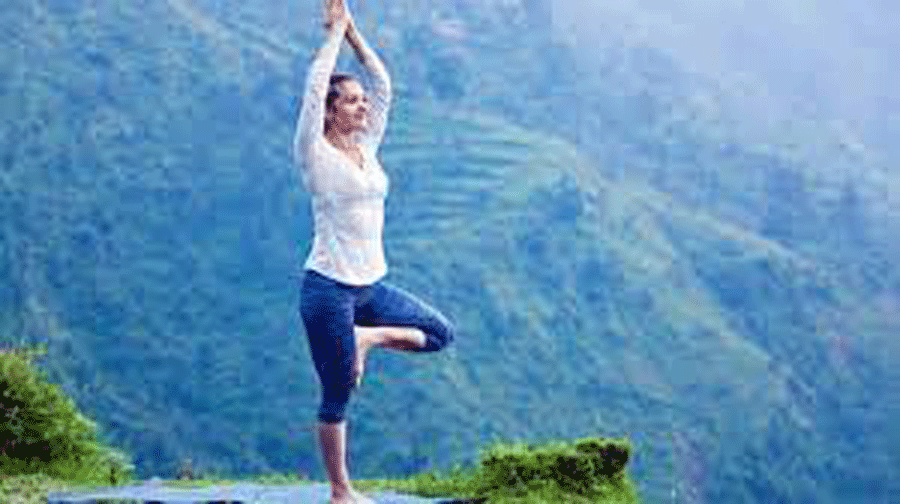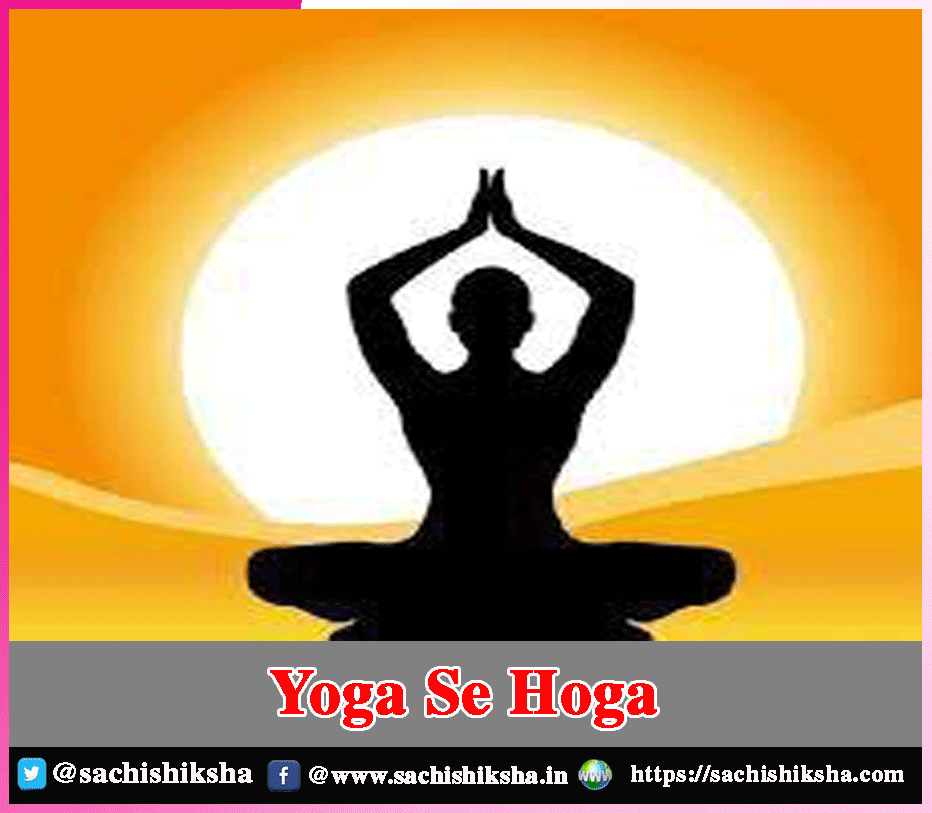Yoga Se Hoga
Introduction: Yoga can be classified into two periods: traditional and contemporary. The history of ancient Egypt spans over 10,000 years, but contemporary history spans 100-150 years. Events began to alter with the rise of the industrial revolution.
Yoga originated to be practised for reasons related to health at that point in time (roughly 100 years ago), and it is classified as contemporary history. As time passed, apparent modifications have occurred, with yoga evolving into a health and well-being practice.
Also Read:
- Sitting Yoga Poses: Yoga Postures With Names
- Silence-The Inner Connection
- Yoga Se Hoga: “Yoga for health, Yoga at home
- Face Yoga To Keep Wrinkles Away
- Benefits of Hand Yoga
Table of Contents
Meaning & Origin of Yoga:

Yoga is a scientific endeavor that is inextricably tied to the union of each person and global consciousnesses. Yoga is derived from the Sanskrit term ‘Yuj,’ which means “union.” The combination of mental and physical faculties depicts man’s interaction with environment. In our hectic schedules, we lose touch with other people and, as a result, with environment.
Objectives of Yoga:
We are able to comprehend and communicate with creation and the cosmic awareness through sitting for a minute while simply breathing properly. Pranayama, or disciplined yogic breathing, enhances life energy. Yoga brings people nearer to their surroundings and their own greater inherent condition (picture yourself climbing in the Himalayas or swimming in the sea).
Types of Yoga:
It prepares one for becoming one with everything. Several yoga postures have been named on creatures and the natural world, such as the cat stance, snake position, eagle position, lion pose, and mountain position, and they help us connect via action, respiration, and mindfulness. People who have tasted the delights of yoga speak of the mind’s role on the yoga journey. Does our mind, which is frequently muddied by materialistic interruptions, possibly acquire the detached mindset required by yoga?
Yoga & Rig Veda:
The origins of this historical practice can be traced directly to the divine domain. Such a practice would have to exist in the imagination of immortality. Yoga’s heritage dates back thousands of generations to the India’s northern region. The expression ‘yoga’ initially appears in one of Hinduism’s four major scriptures, the Rig Veda. Exotic old artwork and carvings from the period shed illumination on the presence of yoga at the time. Shiva, the Hindu deity (Pashupati) and his wife Parvati are shown in various yogic postures and meditation positions.
Yoga & Lord Shiva:
According to legend, Lord Shiva introduced yoga to his bride Parvati in order to make her aware and educate her of her true self. Although Shiva was performing so, Nandi, Lord Shiva’s mount and foremost disciple, observed part of the instructions and transmitted them on to humanity. According to the Nath community, Lord Shiva is the first meditator and is thus known as Adinatha.
Yoga & Brahma:
According to mythology, Parvati, too, considered it challenging to continue keeping this sacred art hidden and handed it on to Lord Brahma, its supreme creator. Consequently, Brahma introduced yoga to his sons Narada and Sanat Kumaras (the five scholars doomed to remain children for the remaining years of their life). Ultimately, this wisdom gained by mediaeval India’s seven sages, or saptarishisi.
In ancient Indian literature, the seven sages are exalted as the most esteemed and intelligent. The rishis were ultimately responsible for documenting this once-secret wisdom in the Upanishads, a collection of approximately 2000 Hindu philosophical-religious revered books.
Yoga & the Gita:
The Bhagavad Gita, unquestionably Hinduism’s most widely read sacred scripture, is also among the most famous Yogic treatise of any era. The terms yoga, yogi, and yogeshwara appear repeatedly in the Gita. The Gita is a yogic literature. It was around 5000 BCE, or 7000 years ago. Sri Krishna offers Arjuna numerous options for resolving his uncertainty and indecision, including the streams of yoga.
In addition to Hindus, individuals all across the world, turn to the Gita for explanations about existence and its significance. The lessons of the Gita have inspired everyone from Einstein to Eliot to Emerson to Will Smith to Steve Jobs and other renowned Modern intellectuals. The Gita contains Hindu values such as dharma (duty), devotion (worship), destiny (actions), and Moksha (soul redemption).
Improves Both Physical & Mental Health:
Yoga brings both immediate enjoyment and permanent change. Each is incredibly significant in the field of health. Yoga can instantly improve your physical and mental capabilities while also strengthening the mind and physique for long-term wellness.
Yoga Centers:
Most yoga centers and neighborhood gyms provide classes in yoga for people of all ages and levels of fitness. Entering an environment full of young adolescents, players, elderly guys, as well as fitness aficionados and body builders is exhilarating. Everybody can feel embraced, covered, and, while sporting events or courses that cater to specific clients, yoga seems to welcome everybody. Yoga can benefit you either you’re content uttering “Om” whether you’re 92, 53, or even 12 years old.
Yoga with Meditation:
Meditation and deep breathing practices in yoga assist develop a subconscious shift away from lists of tasks, children’s desires, financial challenges, and interpersonal difficulties and towards anything greater than the problems you confront. Yoga reduces tension and clears your mind, allowing you to be able to concentrate better. Yoga is more than just a workout; it is a way of existence. Yoga enables pupils to achieve serenity in an otherwise chaotic world. Everyone wants to acquire tranquilly and peace of mind with concentrated practice.
Numerous Choices of Yoga:
One of the advantages of yoga is the fact that one can select a yoga technique that suits the way you live, such as power yoga, relaxing yoga, pregnancy yoga, and so on. There are numerous choices accessible to meet those goals and preferences, regardless of whether one likes to practice privately, in an exclusive session, while viewing a DVD, or at a class or gyms.
If a person is relatively new to yoga, hatha yoga, which emphasizes foundational poses at a slower tempo, is ideal. Power yoga may be suitable for an individual who wishes to enhance one’s muscular endurance by using a greater amount of one’s own body’s opposition. If an individual is been searching for a more in-depth practice, Bikram, commonly known as “hot yoga,” may be precisely what one is searching for.
Finest Practice for Improving Quality of Life:
Yoga is quickly becoming the finest practice for improving a person’s quality of life, and multiple studies have proved that it helps to deliver many advantages for both mental as well as physical systems.
Yoga can assist in enhancing one’s wellness by developing both strength and flexibility, as well as decreasing signs such as anxiety, stress, and depression.Furthermore, Yoga not only improves the condition of anybody, but also encourages healthy eating habits, which reduces the likelihood of contracting any diseases. Furthermore, through encouraging good eating habits, we will be capable of keeping blood sugar or cholesterol levels stable, which constitutes one of the leading causes of major diseases nowadays.














































